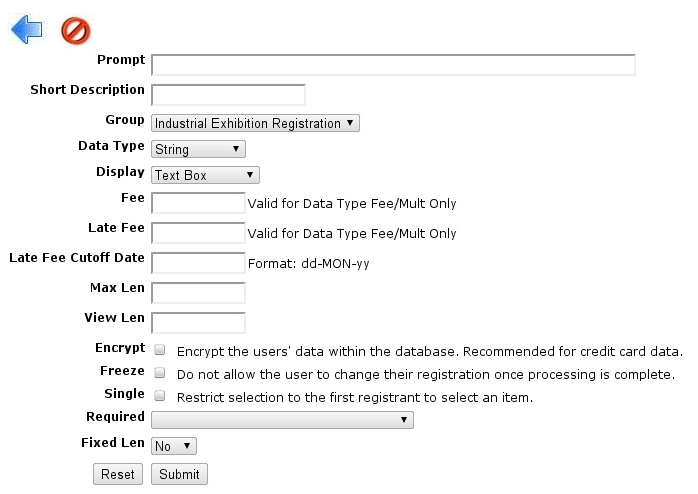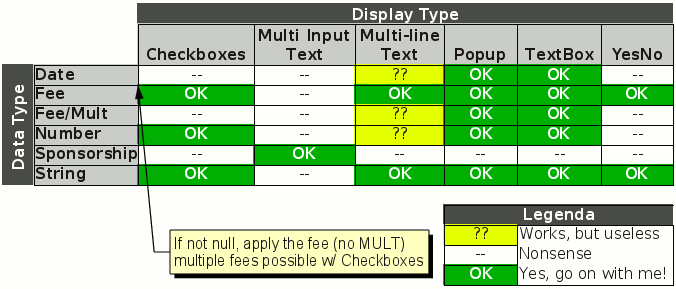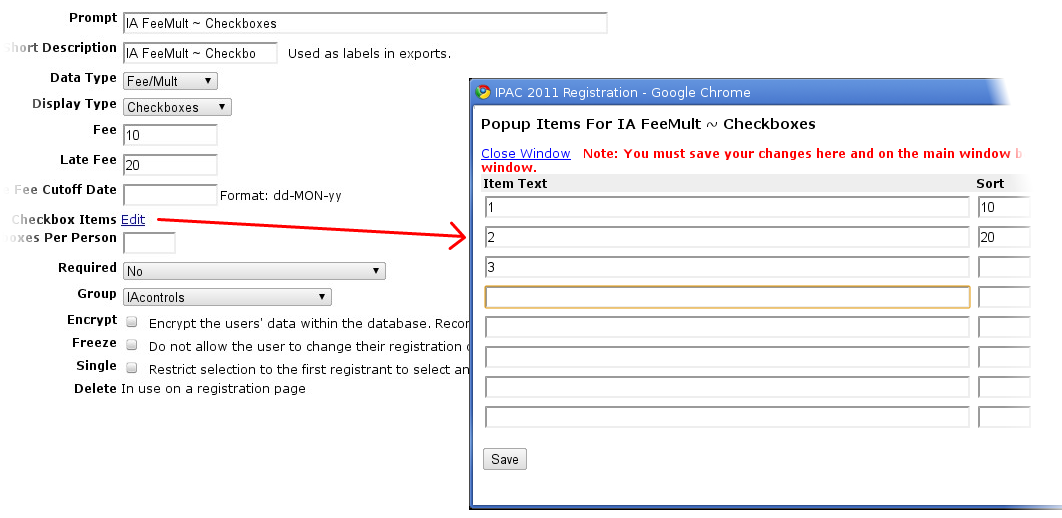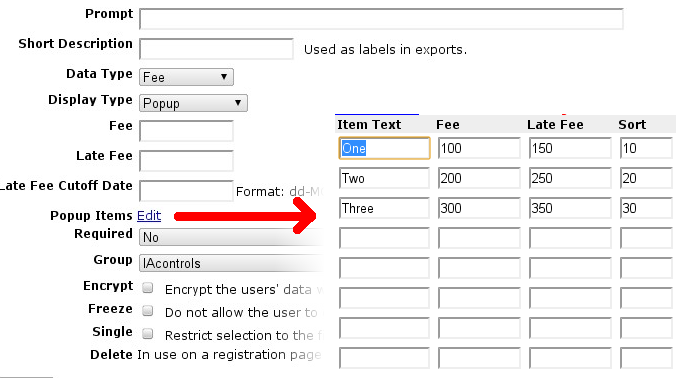
Registration FieldsIntroduction Fields can be created by first selecting a group in which to define a new field and then selecting "New Data Field", or from the step above go directly to "New Data Field" and select the group from the pop-up menu:  Whatever path you take, a screenshot similar to the following will show up:  To define a field it is necessary to enter the following:
It is important to note that not all the fields are available or needed for all datatypes: for example, the fee field is useless when the datatype is a number. By changing the datatype and/or display type (and saving), a different set of attributes will be presented. So, for example, for selecting a fee datatype presented with checkboxes (typical for booth reservation), it is necessary to select those data types and display, then save, then edit the field again to access the (previously) hidden properties (for example, the list of checkbox values). Even more, not all the combinations make sense, even if it's possible to select them. Please refer to the table below for getting only the combinations that make sense.  From now on, we won't cover in detail all those combinations, since most of them are pretty obvious. Where a sort field is present (for multiple items), that means the order in which the items will be displayed. In other words, the field that has the lower figure will be the first, the second-lower will be the second and so on. It is useful to enter multiple of tens as numbers (so that you can "insert" a new item in between of two other by giving, for example, order "15", without changing all the other order weights). Just consider a couple of examples that are worth of discussion. Fee + Checkboxes Fee + Popup Fee/Mult + PopupSimilar to Fee + Popup with the difference that instead of fees, in the "popup items", the predefined multipliers of fee must be entered. SponsorshipSponsorship is a particular data type used only for industrial exhibition pages. Since it's rather complicated it will be described in a different section. |
